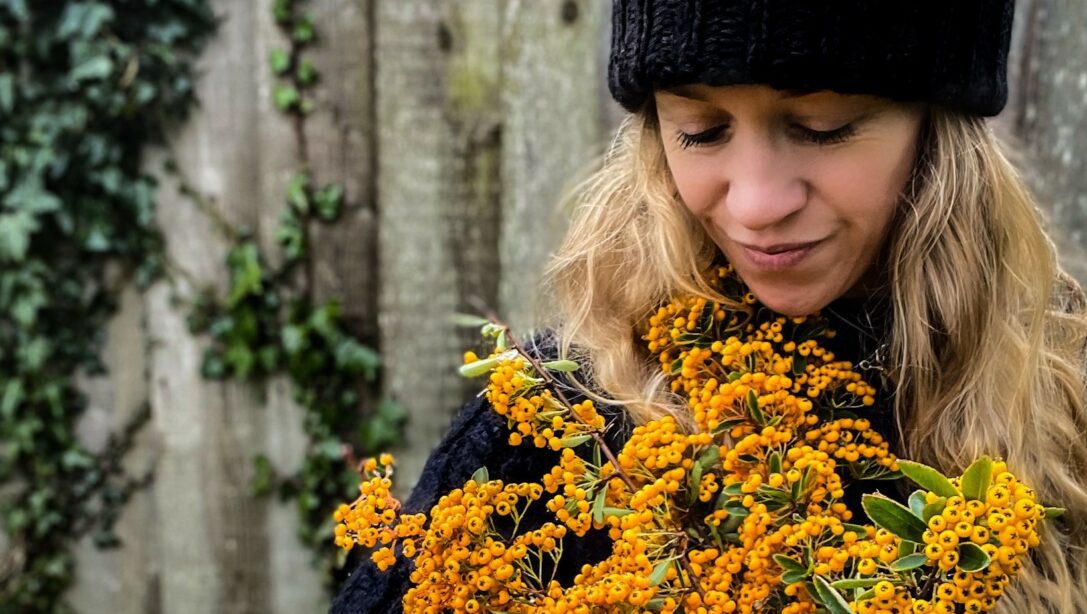It’s that time of year again, our gardens may still be in winter slumber, but every gardener’s mind is running wild with plans and possibilities for the season ahead. It is one of my favourite times of year, the season ahead is pure potential, anything is possible. Right now is the time for change, time to reassess what you want from your garden and make those tweaks to structure and planting that, come summer, can result in something really exciting. It’s also a great time for considering the ‘grow your own’ process.
Perhaps it’s because my background is in design, but I have never understood why there is traditionally such a wide divide between ornamental gardening and Grow Your Own within horticulture. For me they can be one and the same – just because the traditional kitchen garden or allotment aesthetic does not appeal to you, does not mean that you cannot have a garden that you can eat. Growing some of your produce gives you a greater food security. It also reduces your carbon footprint, and means you can eat food when it is at its most nutritious. If you take a slightly more leftfield approach to edible gardening, you can truly have the best of both worlds. This is particularly appealing if you have a smaller garden. You don’t necessarily have to choose between beauty and productivity.
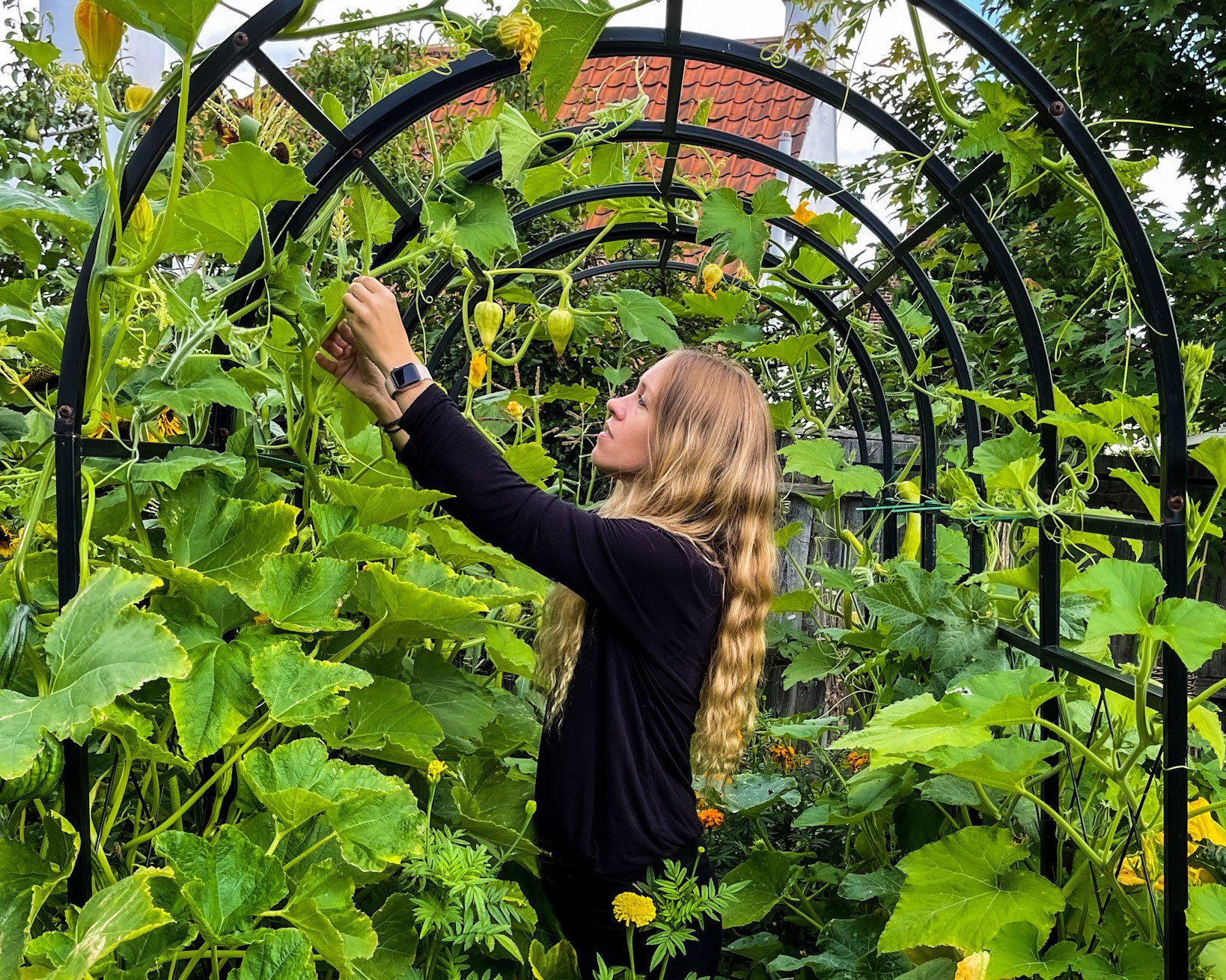
Plan for your Space
The first thing to consider is, if you are going to have a devoted kitchen garden area, how do you lay out that space? Rather that starting with pure practicality, take your inspiration instead from the geometric lay out of French parterre or the traditional English knot garden? Creating a simple geometric pattern from a series of square, rectangular and L-shaped beds instantly elevates the humble veg patch to a well thought out high design garden that naturally draws the eye though it.
Rethinking plant supports can make the world of difference. Move away from the traditional pea and bean teepee and instead grow your climbing veg over arches that span your pathways. Not only is this a fantastic space saver, turning pathways into valuable growing space, but it is also a really beautiful solution for supporting vining plants and can be used to frame views in the garden or add interest to previously overlooked thoroughfares.
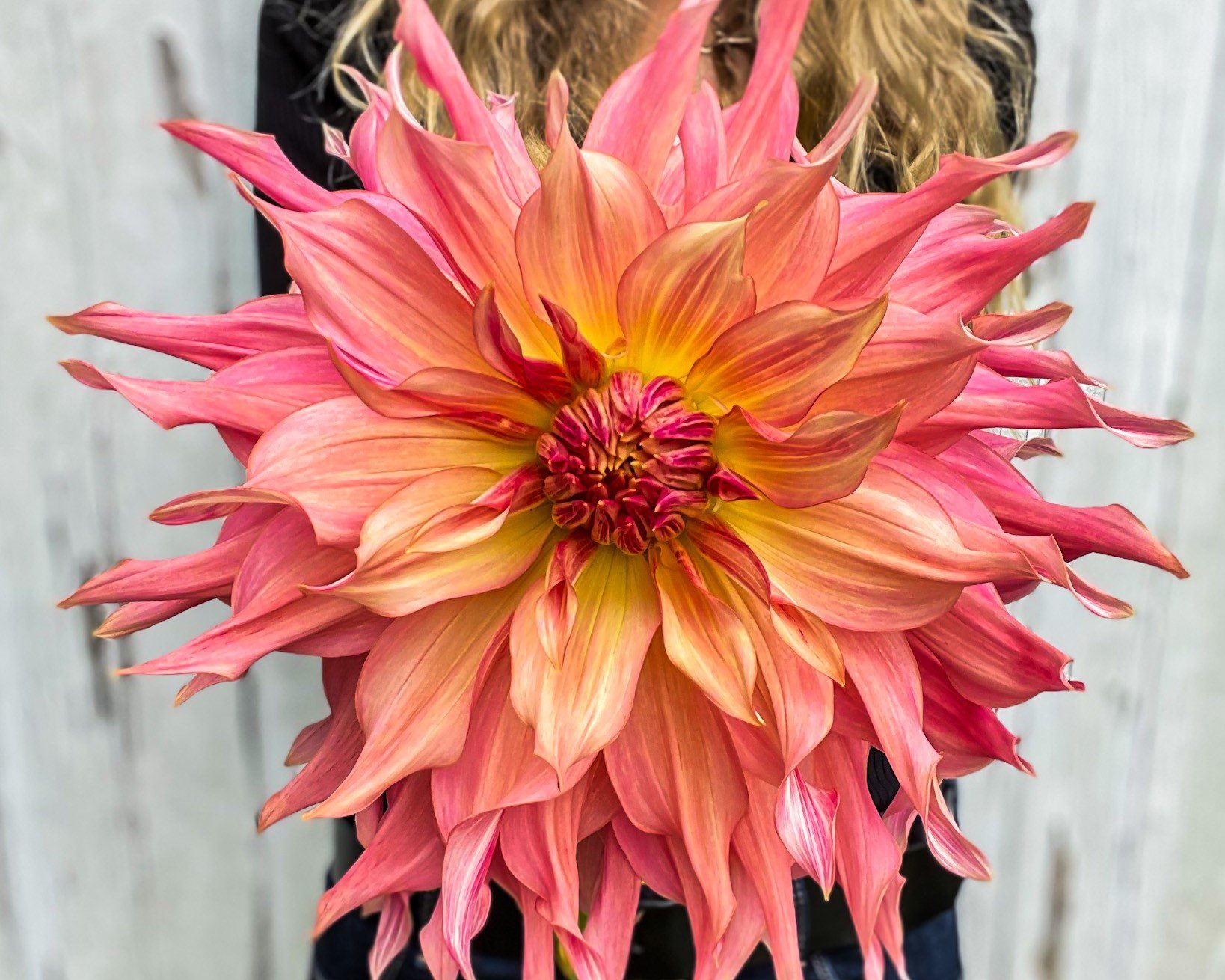
Borders
If you would rather avoid all reference to the kitchen garden altogether, then the ornamental edible border is for you. This does not mean planting cabbages and kale among your hollyhocks and roses, though of course there is no particular reason not to do this. It is more about clever plant choice.
Firstly, your borders may already be filled with plants that are edible and you didn’t even know it. Mahonia, pyracantha, Carolina allspice, hosta, Chinese cedar, amaranth, rose, fuchsia, birch, bay, staghorn sumac, magnolia, chrysanthemum, dahlia and canna for example are all edible, and that’s just for starters. Allow me to caveat here, if you are going to eat a plant from your garden, be sure you have done some research and are confident on which part of it is edible.
It is highly important that if you are looking to use a plant for edible purposes that you keep it in your garden for at least as year before consumption, to ensure that any chemicals that may have been used during its production are no longer present. Carolina Allspice for example, the leaves, flowers and fruit are all poisonous. However, the woody twigs can be dried and used as a temperate climate cinnamon alternative. For more inspiration on what to fill your edible borders with, keep reading for my recommended plants list.
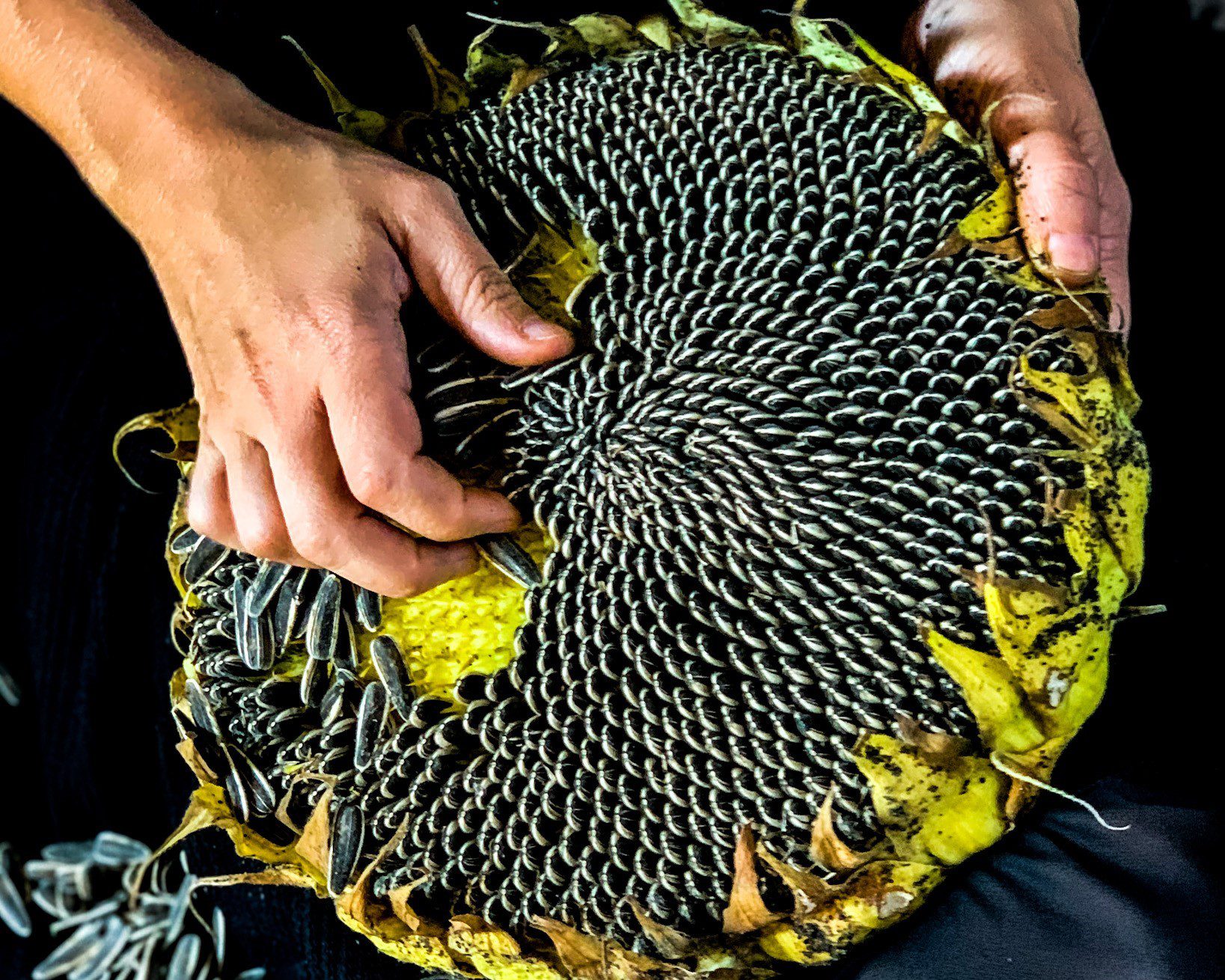
Vegetable plants
As well as the edible plants that you may already own and not know about, there are multiple veg plants with their roots (pardon the pun) firmly planted in the world of ornamental gardening. Tomatoes and runner beans were both originally imported into Europe as purely ornamental plants and were not eaten at all. The tomato in fact remained an ornamental plant for many decades as it was believed to be poisonous being part of the nightshade family. I think it is fascinating that we have stopped seeing the beauty in the plants and now only see the edible end product. It is high time we fell back in love with the beauty of veg!
Fruit trees
Think fruit tree, you think orchard, but why? These are brilliant and beautiful trees which, unlike many ornamental trees, burst into the most spectacular display of blossom every spring. Now that is something I want to see in my flower beds, not set away in an orchard! And as a bonus, that blossom is inevitably followed in autumn with lots of delicious fruit.
Hedging
Another way to bring a lot of edibles into your life is to rethink something as mundane as hedging. Hedging plants can be pretty uninspiring. Privet is fine, Yew grows so slowly you may feel like you’ll never see a fully mature hedge, and between blight, rust, leaf miner and of course the dreaded box tree caterpillar, Box is such a headache it seems barely worth the effort. So perhaps instead consider creating your own forageable hedgerow. There are some amazing edible hedging plants out there including elder, hazel, dog rose, blackthorn, wild plum, crab apple and let’s not forget the humble bramble. Using a combination of these plants you can create a really beautiful, fragrant, flower filled boundary that will provide you with a load of food as a bonus. It will also create a naturalised area to encourage beneficial wildlife into the garden.
So, you see there are so many ways you can bring some food into your garden in ways that will only enhance its beauty. This is really only an introduction, but I hope it’s got your head ticking. Now is the perfect time to tweak or add some edible elements to your garden. Come summer, you can be literally reaping the fruits of your labour.
Recommended Plants for a Beautiful Edible Garden
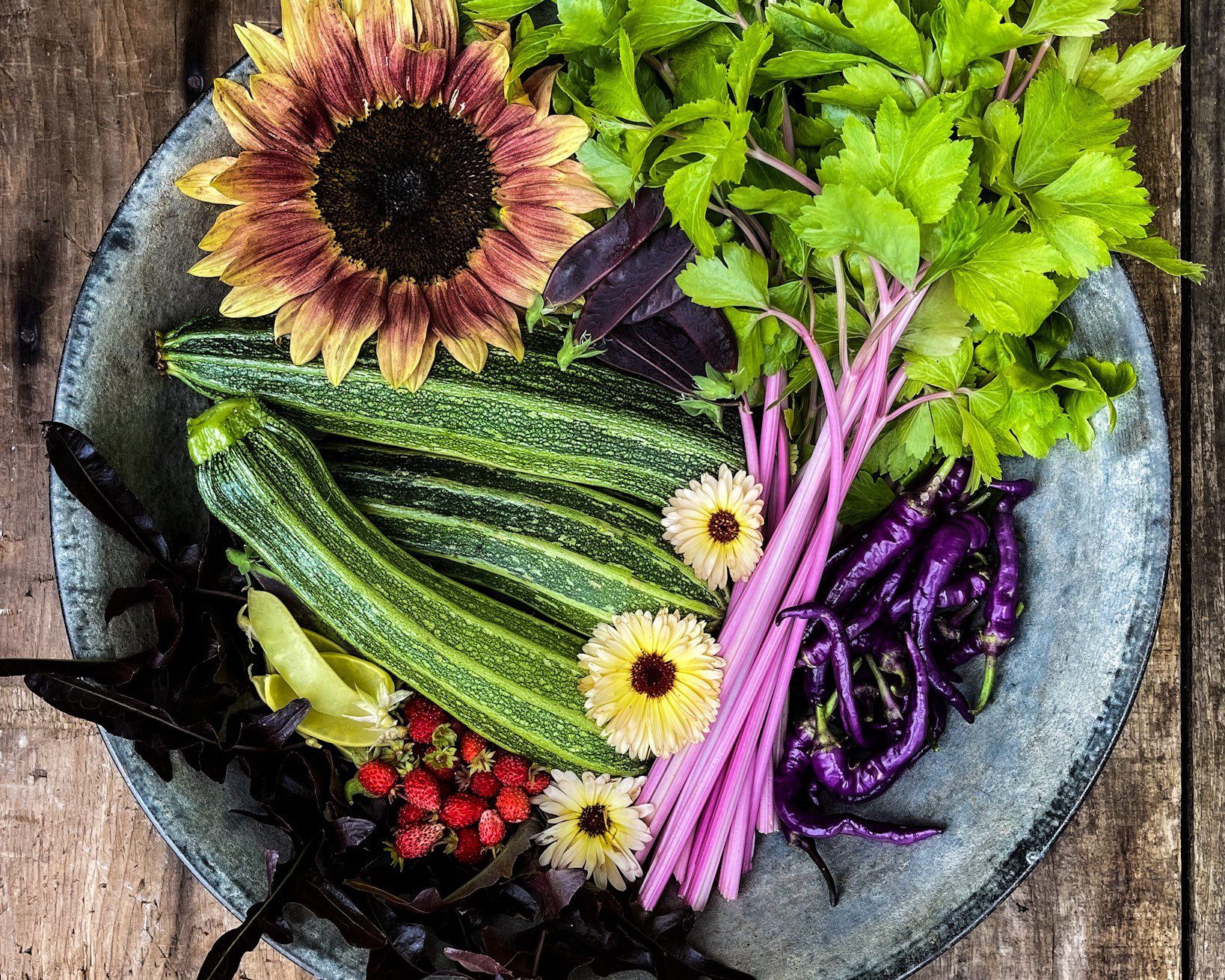
Grow your Own Edible Flowers:
Nasturtiums
In my opinion by far the best edible flower you can grow. Every part of this plant can be eaten with a peppery flavour like rocket but much easier to grow with no risk of bolting. Add the flowers and leaves to salads for a peppery kick. The leaves can replace basil in a traditional pesto recipe and are delicious. You can even brine the seed while still green and create a homemade alternative to capers.
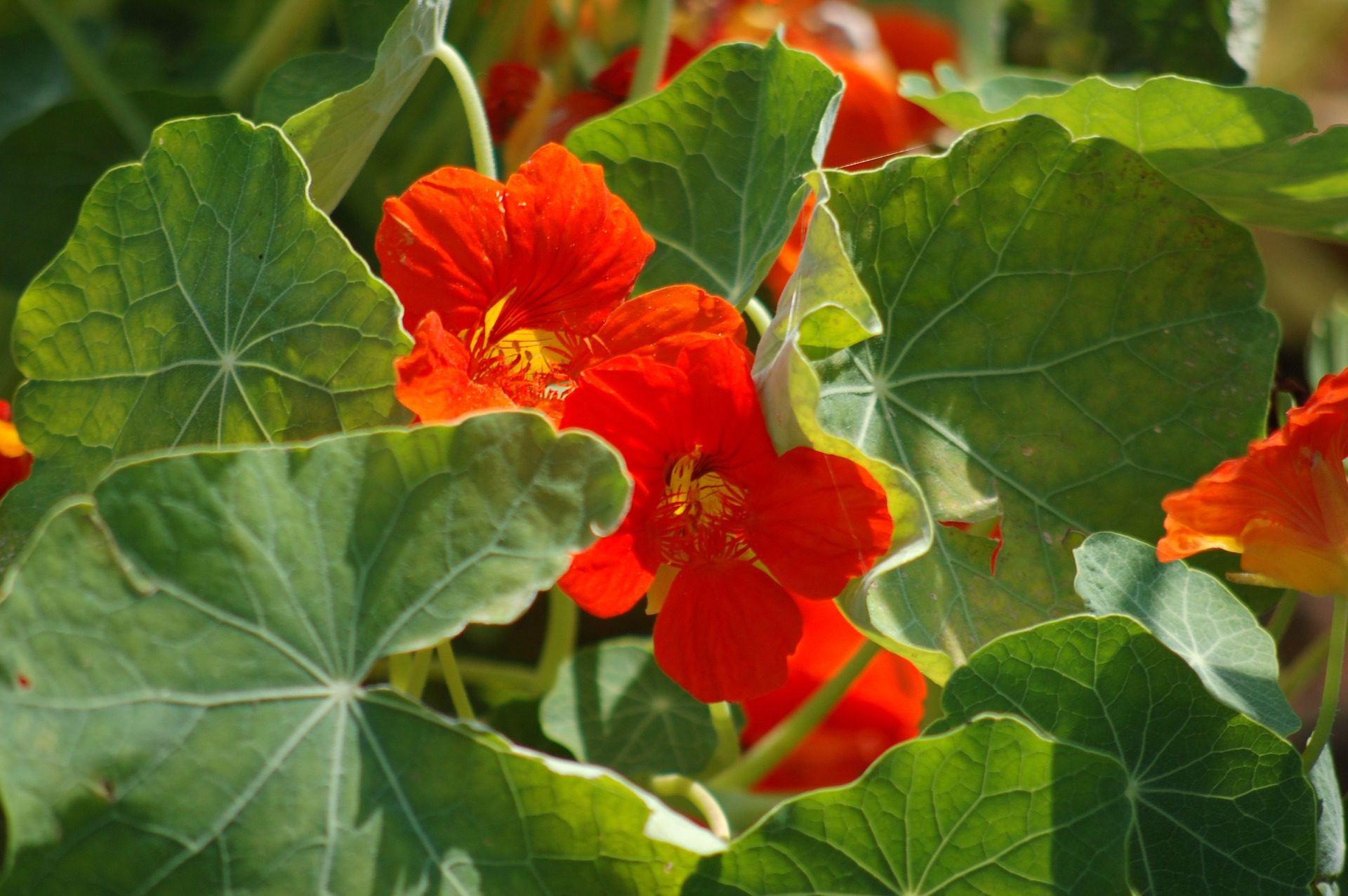
Sunflowers (Helianthus annuus)
This plant has so much more to offer on the food front in addition the huge number of edible seeds produced at the end of each season. The petals are edible, the unopened flower buds can be eaten in a similar way to globe artichokes. You can even pick the heads of larger varieties ones the seeds have swollen but before they harden on the outside and roast and eat like corn on the cob.
Day Lily (Hemerocallis fulva)
This beautiful flower has something to offer at all stages. The big, bright, fully opened flowers add a real wow factor to salads. The withered flowers can be dried and ground into a power for seasoning. However, the real prize is to catch the flower bud before it opens. They are fresh and crisp and tasty and delicious raw or stir-fried. Why not try as tempura.
Artichoke (Cynara cardunculus)
A delicacy that costs a fortune in the supermarket but that is actually really low maintenance plant to grow. Stop thinking of this plant as a vegetable and see it as the beautiful architectural edible ornamental that it is. It is will well worth leaving around a 1/3 of the flowers on the plant to open so you can enjoy watching myriad bees wriggle around blissfully in the vivid purple blooms.
Pot marigold (Calendula officinalis)
A lot of edible flowers are fairly overrated and not really good for much but cake decoration. Calendula, however, has another very exciting string to its bow. Yes, you can enjoy the blooms fresh, but you can also pick them and dry them and use the petals as a much cheaper and more abundant saffron substitute.
Dahlia
A beloved plant of the cut flower gardener this was in fact originally bought to Europe as a food crop because of its edible tubers. In most areas of the UK this plant needs to be dug up each year anyway and a number of the large tubers can easily be removed without damaging the plant. In the kitchen treat as you would a potato, each cultivar has a slightly different taste so you can enjoy figuring out which one is your favourite.
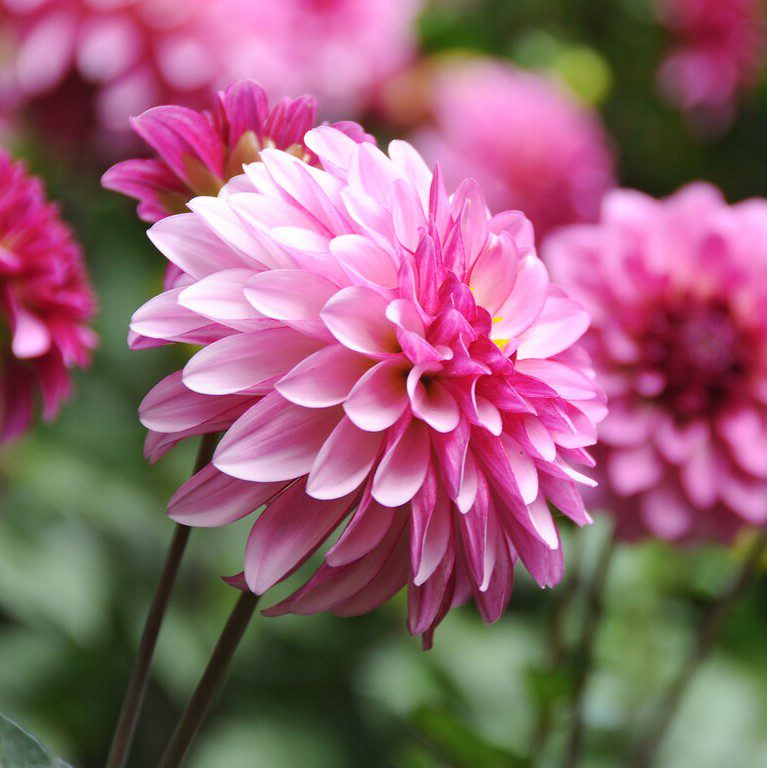
Grow your Own Herbaceous:
Angelica (Angelica archangelica)
A tall architectural herb that will provide large flowerheads covered in seeds that give a great liquorishy kick to food. If you’re feeling adventurous the stems are traditionally candied in Scandinavia.
Hosta
The perfect shade plant, it seems relatively uncommon knowledge that this plant is not only edible but truly delicious. The new shoots in early spring can be harvested and cooked in much the same way as asparagus with a hint of the same flavour.
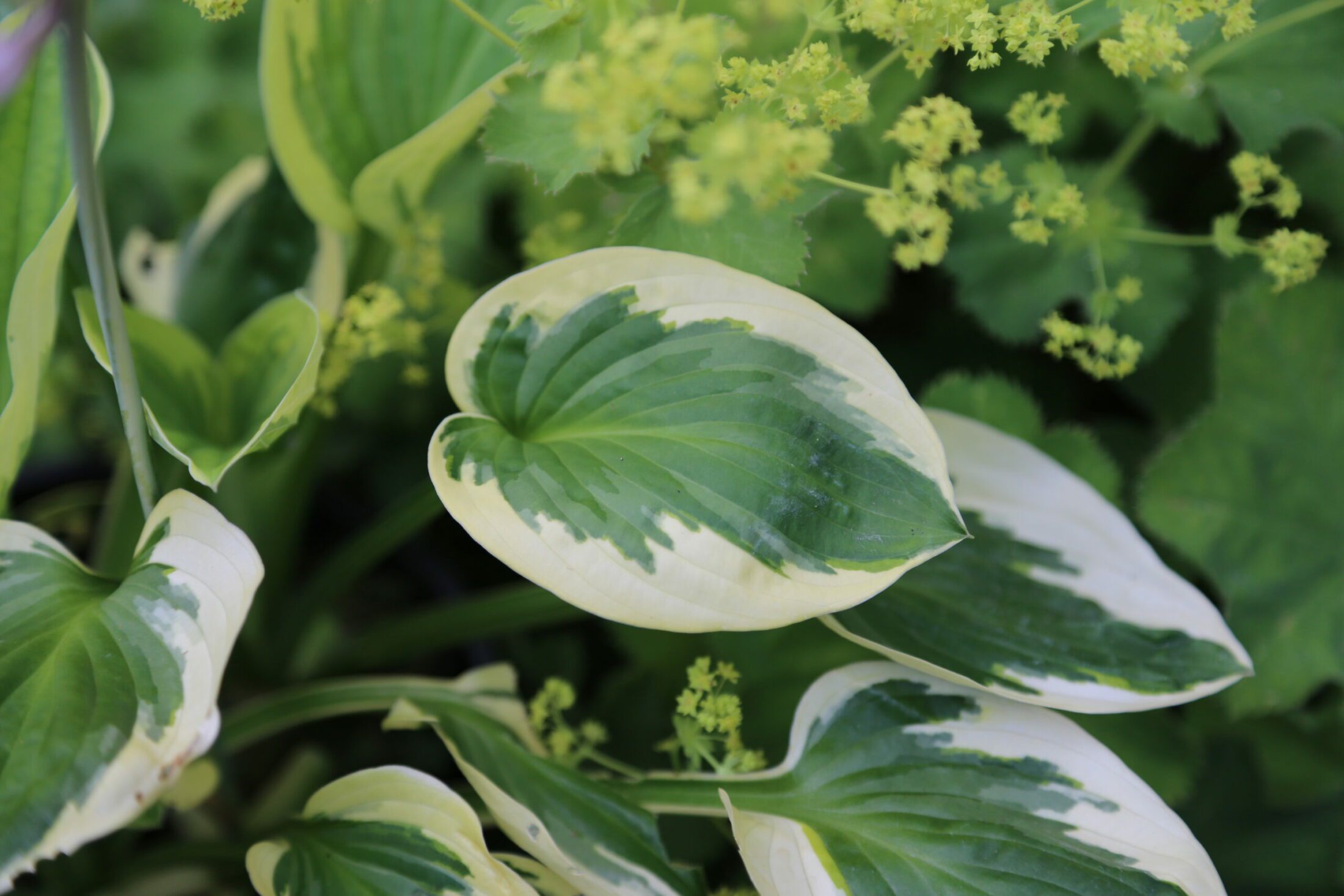
Amaranth (Amaranthus caudatus)
The leaves can be used as a great alternative to spinach. Whereas the seeds that follow the beautiful bright flowers are similar to quinoa.
Red orach (Atriplex hortensis)
Not a perennial but orach will happily self-seed and reappear year after year. The bright purple foliage adds real drama to ornamental border whilst also being the perfect alternative to spinach.
Shrubs and Vines:
Firethorn (Pyracantha)
A favourite for bringing winter colour to the garden those brightly coloured berries are also edible. Not so good fresh but great for jams and preserves, just watch those thorns, it’s called firethorn for a reason.
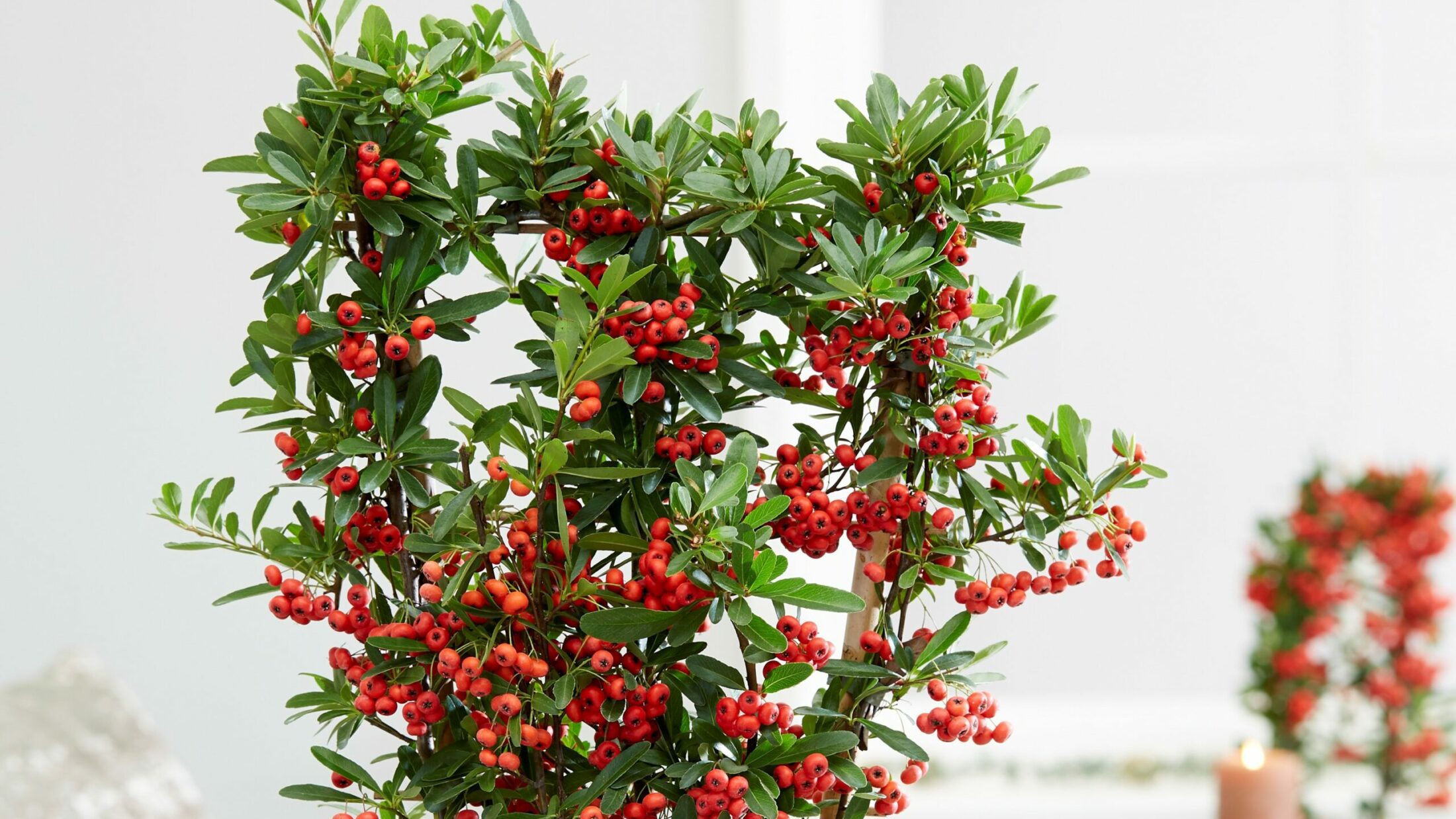
Carolina allspice (Calycanthus)
A cinnamon substitute you can easily grow in the UK. The twigs of this plant can be dried and the bark used just like cinnamon. Please note, the bark is the only edible part of this plant.
Bay (Laurus nobilis)
A reliable dark green glossy evergreen shrub or tree that also provides aromatic leaves to flavour sauces and stews.
Edible passion fruit (Passiflora edulis)
This is one for the greenhouse or polytunnel but given enough protection this vigorous vine will put on a jaw dropping display of flowers followed but a profusion of the delicious fruit you find in the supermarket. If you can’t provide enough shelter for the tender edible passion fruit, then it is worth noting that the fruit of the common hardy passionflower is also edible, you’ll just find there’s not a lot to be found inside each fruit.
Japanese quince (Chaenomeles)
Providing a dreamy display of blossom in early spring, the fruit that follows is fantastic for preserves
Fuchsia
Did you know those dark pink or purple berries that appear in profusion are edible? They taste similar to a fragrant strawberry.
Mahonia
Another favourite for winter colour the berries are a challenge raw but are perfect for preserves.
Trees:
Chinese cedar (Toona sinensis)
The young leaves have an amazing oniony flavour and make a great stir-fry green. For real drama go for the ‘Flamingo’ cultivar. This has eye popping flamingo pink foliage through spring before slowly turning green.
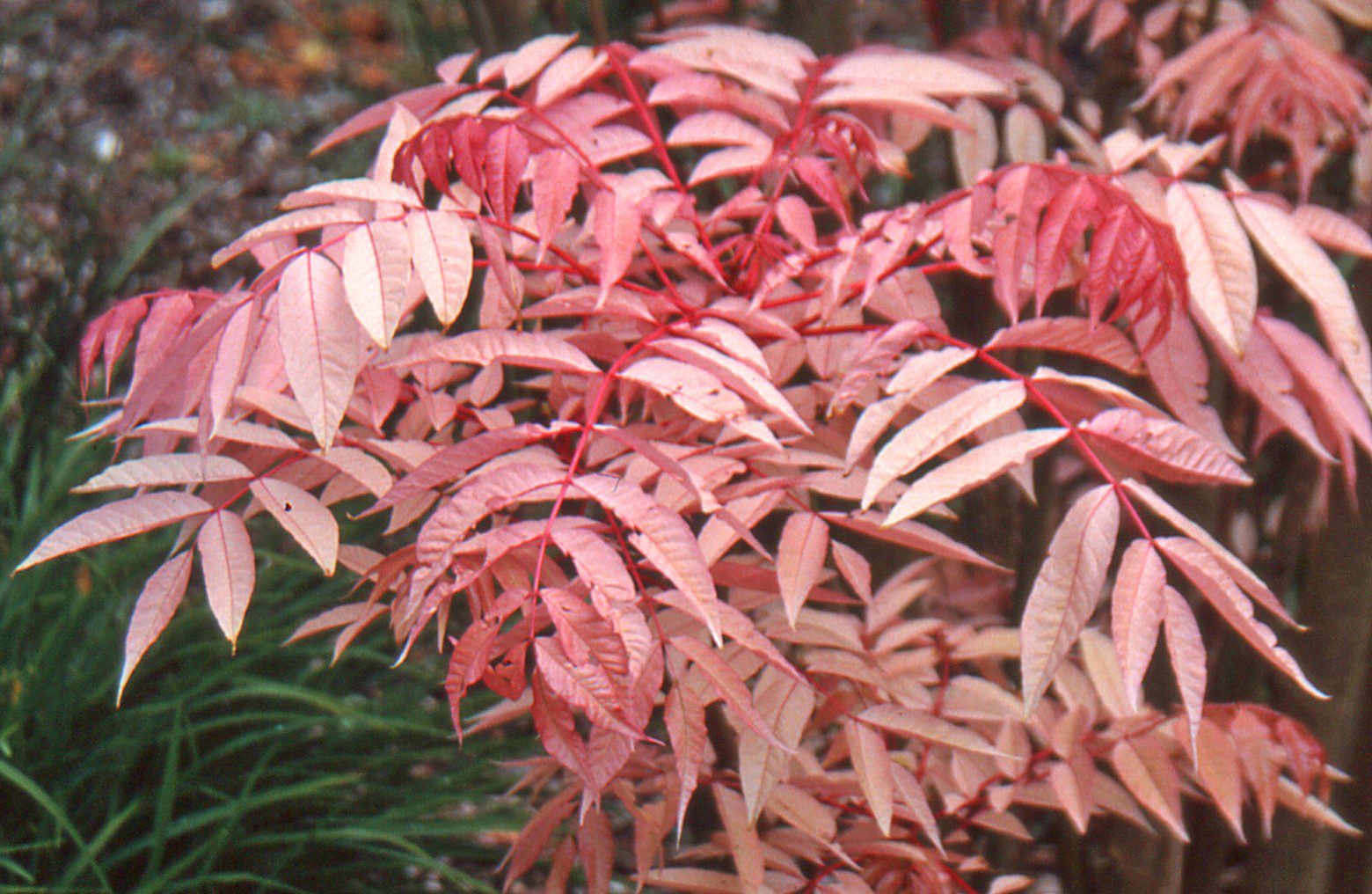
Magnolia
Favourite tree in ornamental gardens the flowers are not only beautiful but delicious too with a hint of ginger. The fleshy petals can be eaten fresh or are great pickled. You can use them in tempura or even make them into a fragrant syrup
Silver birch (Betula)
Arguably one of the most beautiful trees especially in winter with those bright white trunks. They can also be tapped in a similar way to maples to gather some of the slightly sweet sap in early spring. This can be drunk fresh or fermented or reduced down to make a syrup. Please note any birch tree can be tapped, not just silver.
Elder (Sambucus niger)
The elder has much to offer. Providing fragrant flowers that are fantastic in flavouring drinks and deserts, followed by tasty berries in profusion. The older and dead wood even attracts a distinctive edible fungus called a wood ear or jelly ear (it does indeed look and feel very much like a brown coloured ear) that only really likes to grow on elder.
Fruit trees
When selecting trees for an ornamental garden I would always encourage the choice of a fruit tree. They put on a profuse display of blossom in spring, followed inevitably by rewarding you with your fruit of choice. These are beautiful trees in their own right and deserve to escape the confines of the orchard and be welcomed with open arms into the ornamental borders.
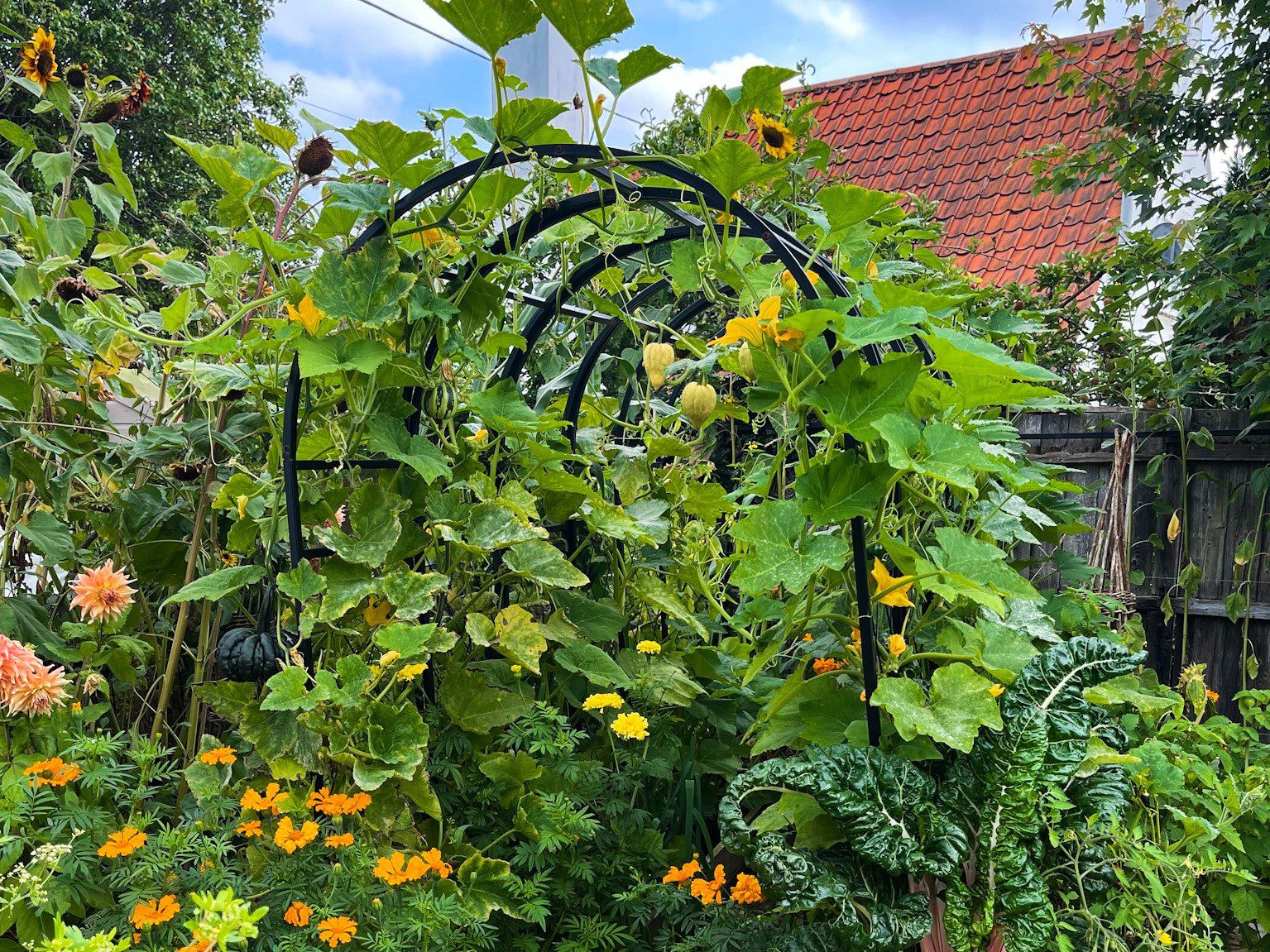
Follow the author of this article, Lucy Hutchings (SheGrowsVeg), on her social channels. Here you can find out more about her suggestions in expanding your grow your own garden.
Instagram: @shegrowsveg
Blog: SHEGROWSVEG.com
Facebook: www.facebook.com/shegrowsveg


